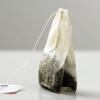[Typescript] translate bluetooth DataView notifications to usable data.
-
Topics
-
lumooo ·
Posted in General Discussion0 -
0
-
0
-
0
-
EnricoJ ·
Posted in Peripherals0 -
0
-
EnricoJ ·
Posted in Peripherals0 -
Mahbub ·
Posted in General Discussion9 -
0
-
1
-

















Create an account or sign in to comment
You need to be a member in order to leave a comment
Create an account
Sign up for a new account in our community. It's easy!
Register a new accountSign in
Already have an account? Sign in here.
Sign In Now